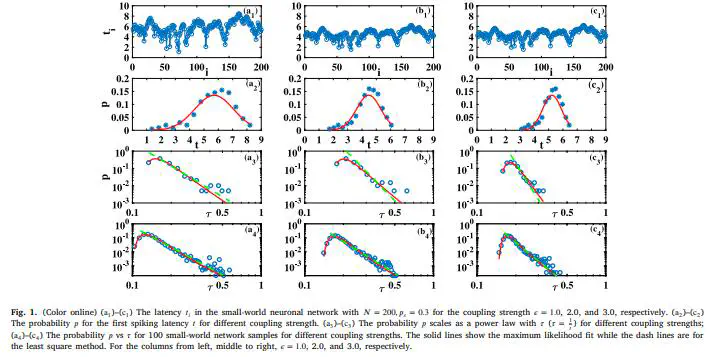
Abstract
Information encoding and decoding by neurons is a fundamental process in neuroscience. Herein, we present a statistical investigation of the first spike timing arising from the neuronal population in a small-world network with the Hodgkin–Huxley model after a neuron has received current stimulation, including a transient or a continuous stimulus. Regardless of how the interaction between neurons in the network was implemented, via electrical coupling or chemical synapses, we found the same power-law statistics for the first spike timing, independent of the topological structure of the neuronal network. We further suggest that such power-law statistics can be a generalized feature for the first spike timing in the small-world and scale-free neuronal networks. Our findings provide new insight into the coding mechanism for the first spike timing and improve the understanding of the power-law behavior in nature.